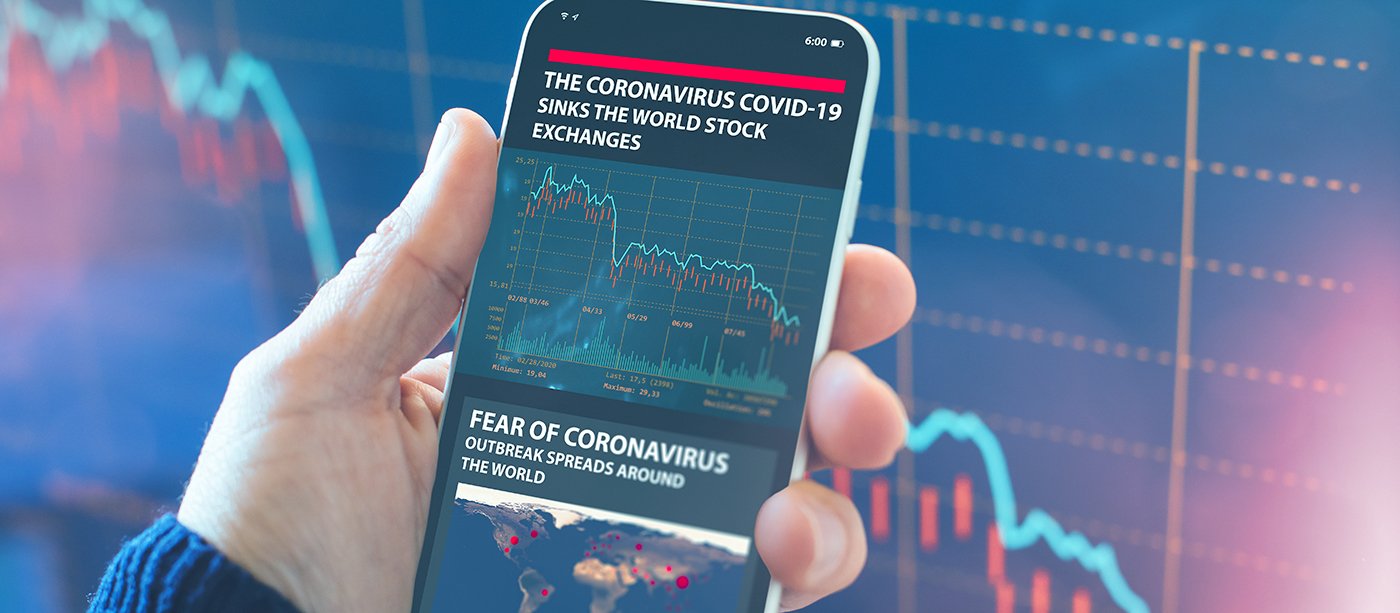The Corona crisis has put a severe damper on the world at the peak of globalization so far and in times of complex and excellently rehearsed supply chains. But beyond the evident and existential issues facing many companies, it is now undoubtedly time to look at the supply chain challenges ahead in most industrial sectors.

It’s the middle of 2020, and entire industries and their supply chains are in crisis. Germany and the world are facing massive drops in orders and demand, new and challenging regulations and a wide variety of restrictions, and many companies are fighting for their very existence in some cases. Many of our customers are currently in a state of absolute emergency. Budgets have been frozen or cut altogether, and orders have been canceled. Unfortunately, contracts have been terminated, knowledge workers are being put on short-time work or laid off altogether, and all of this is cascading down from the OEM, through 1st tier, 2nd tier suppliers, to the base of the supply chain.
There is no doubt that many of the above are unsurprising and perfectly understandable in light of this global crisis. Unfortunately, it is precisely these measures that will make it even more difficult for many companies to return from the crisis to normality.
It can be assumed that the effects of the crisis will have a more significant impact on OEMs in absolute terms – whether in the automotive or aerospace sectors. But due to their size, they will not suffer any lasting damage in terms of stability as an organization or even as technology pioneers. However, the situation is different for suppliers regardless of their size, whose contracts often include flexible purchase commitments, short-term planning horizons, ridgelines of, e.g., ±15-20%, and other vagueness and risks, which are now occurring in bundled form. The obligatory cost pressure is only mentioned here in passing.

If we now take all these points together, a bleak picture emerges for the entire value chain in a post-Corona world:
- Economically weakened companies along their supply chain make decisions that secure their existence, which will not necessarily always be in the interest of the OEMs
- Loss of know-how carriers or well-trained personnel from their suppliers and their suppliers’ suppliers
- Sudden supply bottlenecks or complete failures of entire deliveries
- Short-term and severe fluctuations in deliveries and inventory levels
- Manual prioritization and control past stable, standardized, and monitored processes
- More frequent errors and increase in quality problems due to “bypassing” of standard processes and the resulting overall increase in complexity
- Significantly increased effort in the plants in disposition, logistics, production or quality as well as in central areas such as procurement or supply chain quality
Put more bluntly, many supply chains will likely descend into chaos, further exacerbating an already challenging situation for many companies.
So what can be done to avert this “doomsday scenario” and ensure a relatively smooth and disruption-free ramp-up of supply chains post-Corona?

1. Transparency – Where Do You Currently Stand with Your Supply Chain?
Derive the proper measures based on facts without wasting valuable resources or time.
- Generate and continuously update a valid database
- Based on this, immediately set up and roll out a crisis cockpit
- Record and closely monitor supply chain disruptions centrally and easily
- Prioritize and continuously adjust risks and disruptions based on an assessment logic that makes sense for your organization
- Identify and closely monitor critical suppliers
- Identify strong dependencies of your suppliers on critical sub-suppliers and monitor them as well
- Establish and intensively use single window communication interfaces to responsible parties of critical suppliers
2. Crisis Management – How do You Get Out of the Crisis as Quickly as Possible?
They targeted crisis management with a high degree of flexibility and the ability to ensure critical deliveries and avoid chaos quickly.
- Prioritized risks or disruptions are quickly and precisely eliminated by fast response teams
- On-site empowerment of suppliers or sub-suppliers through task forces
- Ensure supply through rolling and short-term resource bottleneck management using residents
- Assign responsibilities internally and externally in the context of crisis management
- Strengthen partnership with your suppliers
- Promote win-win situations in which all sides benefit from crisis management
- Keep the frequency of communication high, both internally and externally, while conserving as many resources as possible (e.g., through daily 10-15 minute coordination meetings with a small number of participants).
3. Stabilization – At Which Points Should Your Supply Chain Be Urgently Optimized?
Sustainable elimination of disruptions and bottlenecks while simultaneously tapping potentials.
- Development of suppliers based on your findings from the previous phases
- Adjustment or even temporary suspension of contractual or process requirements
- Shifting capacity requirements in line with demand
- Increasing planning reliability (e.g., by extending the planning horizon)
4. Risk Management – How Do You Safeguard against Future Disasters?
Use the time after Corona or the time before the next crisis wisely to set up your organization as crisis-proof as possible.
- Establish a risk management system with a functioning early warning system
- Put existing supply chain management processes and supplier evaluation to the test and optimize them.
- Work out crisis scenarios and develop and anchor contingency plans for highly probable scenarios.
- Look at the entire tier 1 to n supply chain

Looking at the Corona crisis positively has meant that our society is now more open to many things than before. Think of the massive increase in acceptance of working out of the home office, successful remote training or audits, think of the quick response of liquor manufacturers who have produced disinfectants on short notice. Many companies worldwide have proven how creative and adaptable you can be out of crises when it counts.
That the next crisis, pandemic, or disaster will come is only a matter of time. Together, we should do everything we can to ensure that our supply and value chains are as well prepared as possible to weather it.

